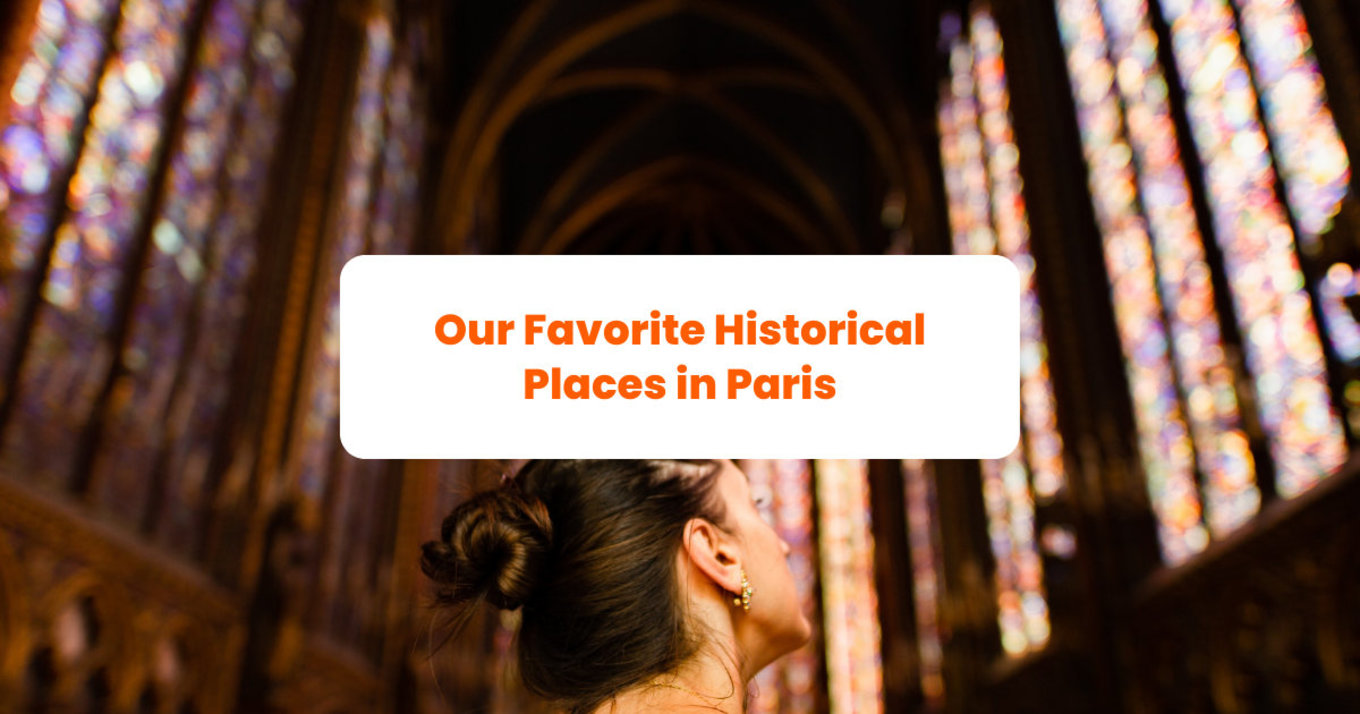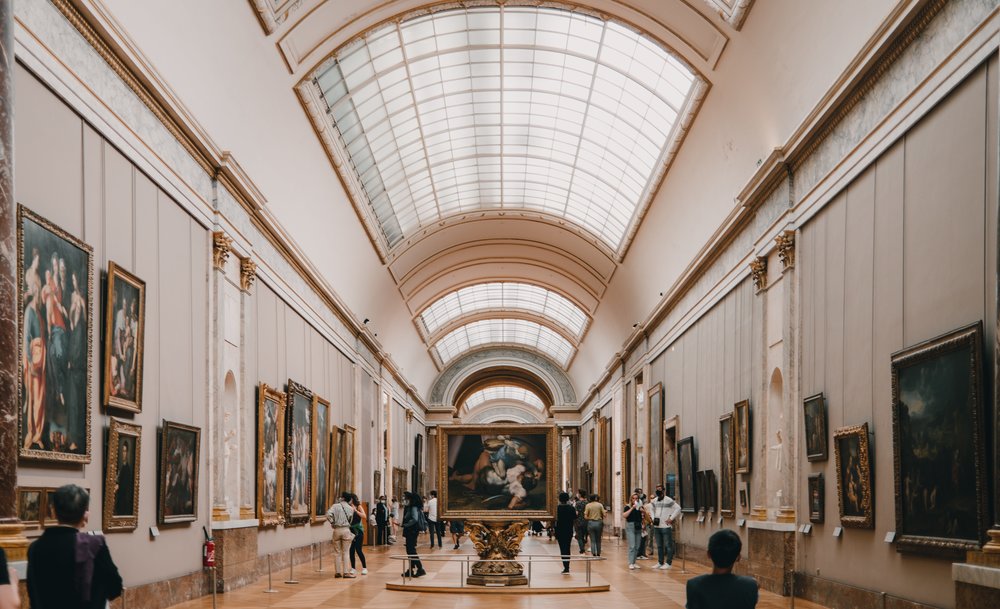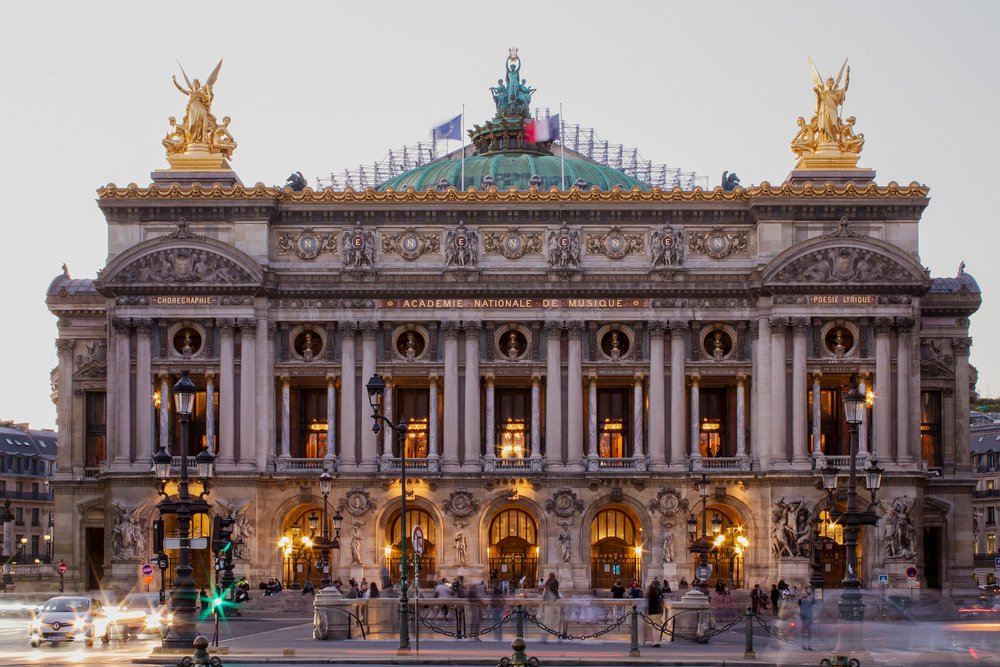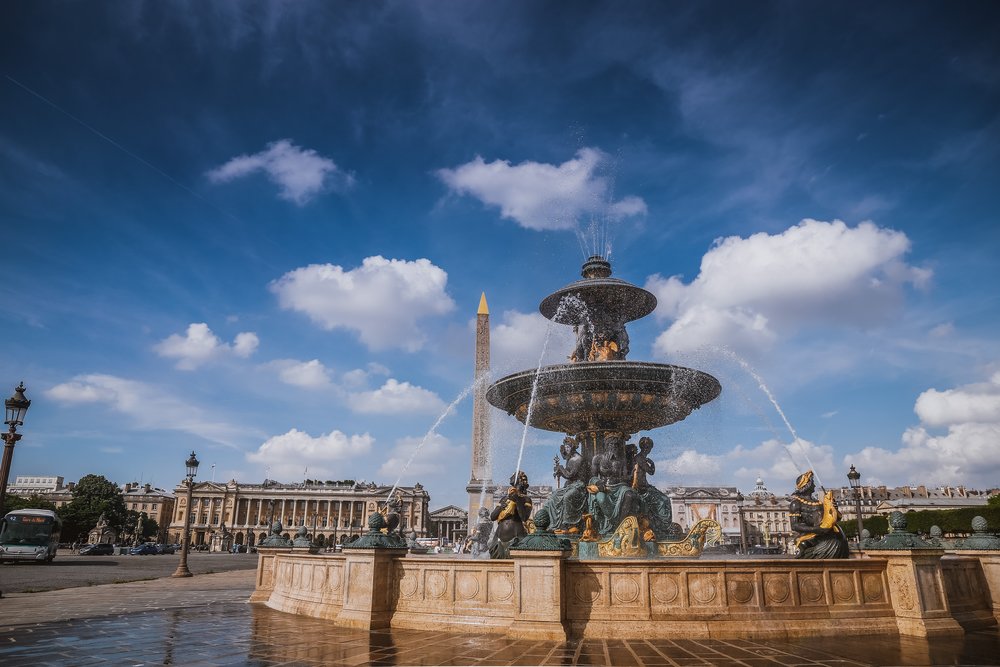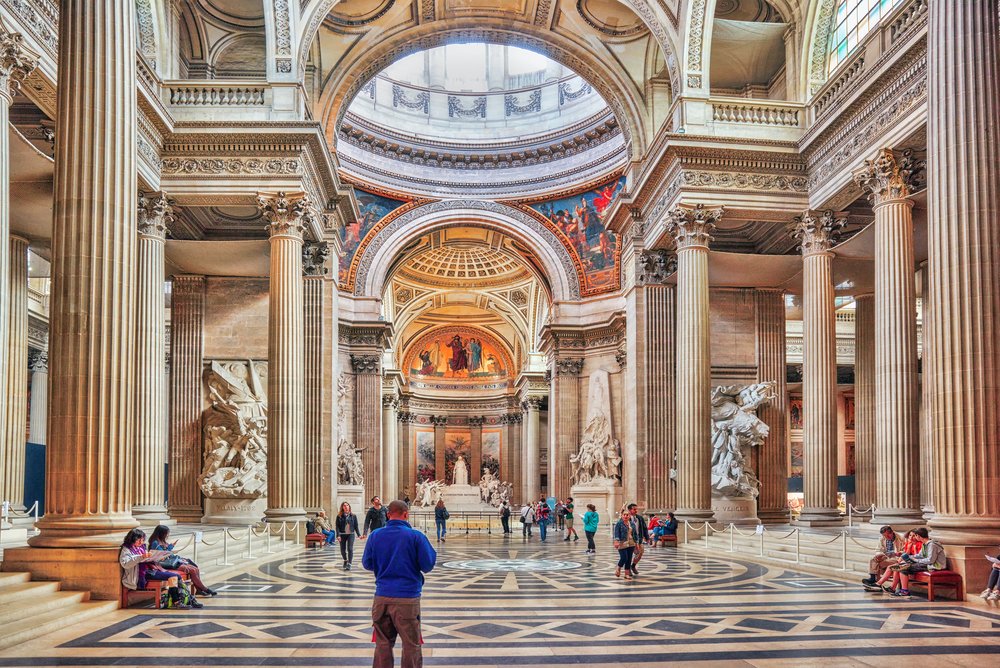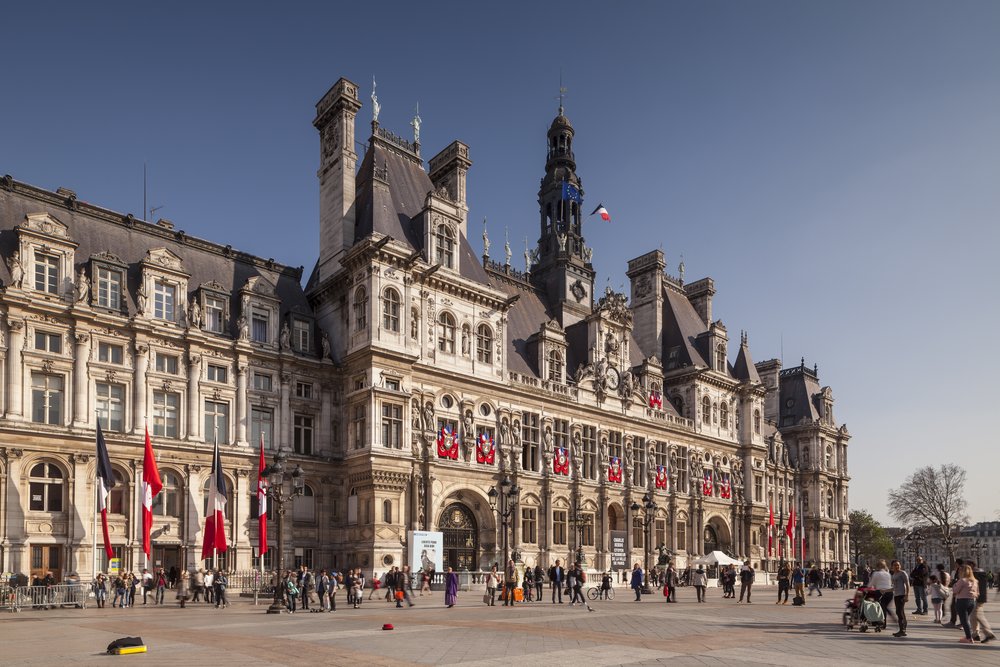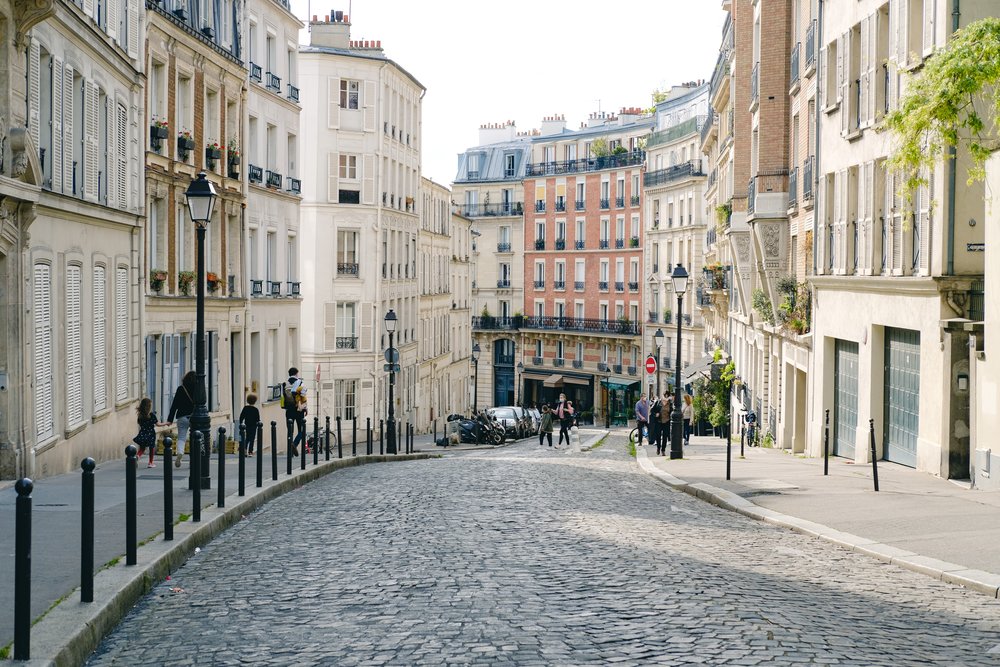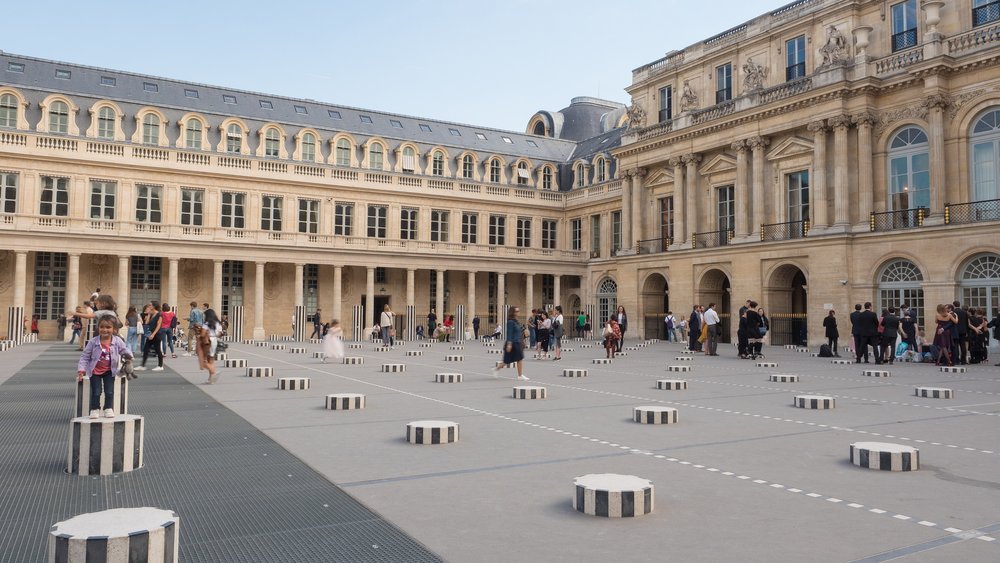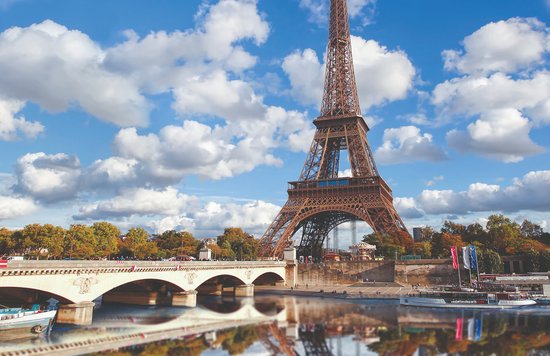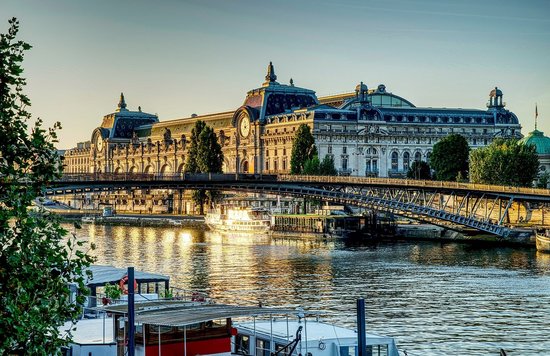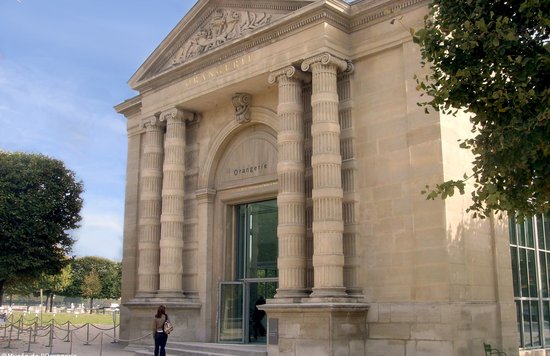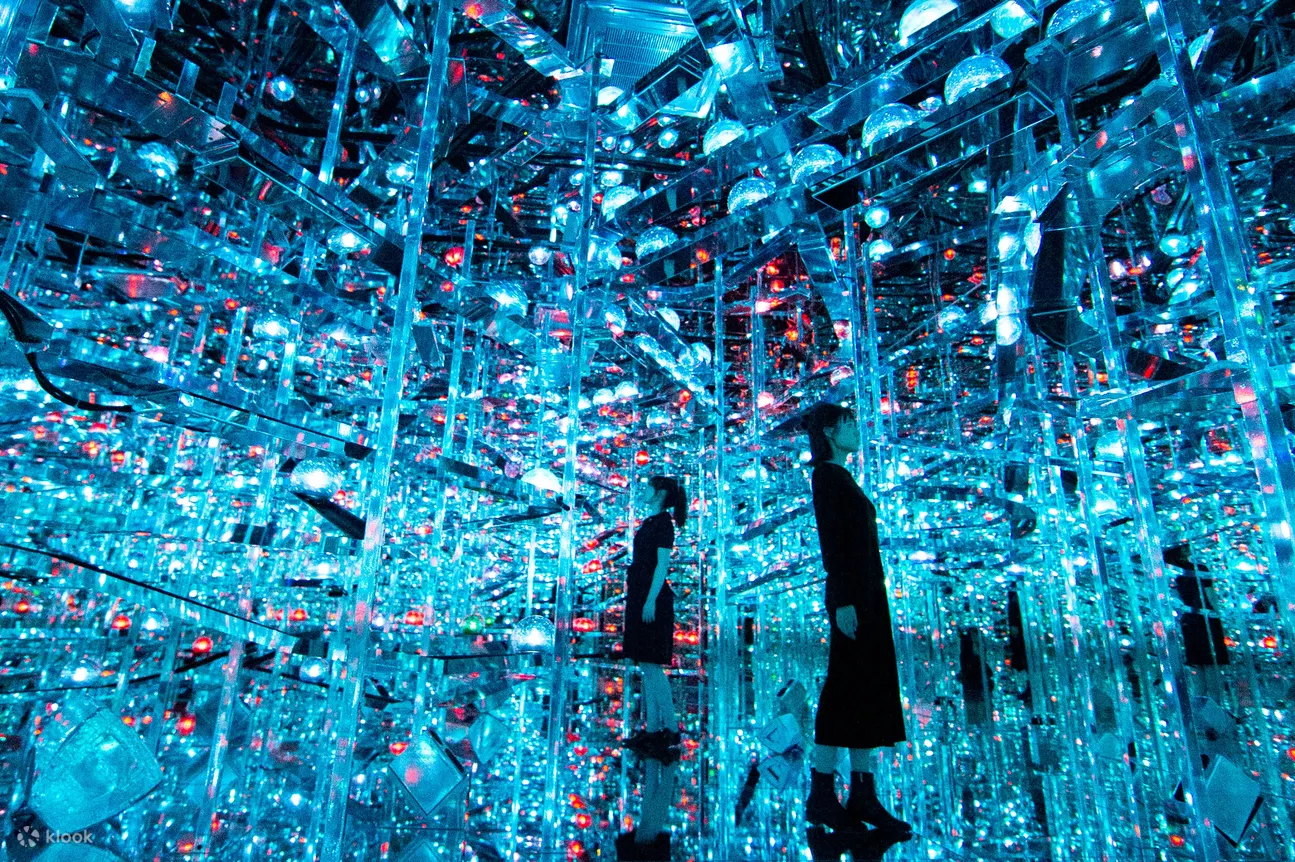Step back in time as you immerse yourself in the history of Paris!
Famous for its signature cityscape that features some of the most iconic landmarks in the whole world (think the Eiffel Tower and the Notre Dame Cathedral), Paris welcomes you with its fascinating history as soon as you step foot in the city of love. No matter how short or long your stay is in Paris, you’ll be surrounded by historical relics throughout. And even if many contemporary buildings now adorn the Parisian cityscape, such as La Seine Musicale and its egg-shaped theater clad in solar panels or the Fondation Louis Vuitton that’s covered entirely in glass panels, Paris remains deeply rooted in its rich heritage.
If you’re planning your dream European vacation and need some help creating your Paris itinerary, then we’ve got you covered! For ideas on where to go in Paris, check out our list of the 10 attractions in the city that show its historical side best:
1. Musée du Louvre
The museum’s glass pyramid in the courtyard, along with the building’s ornate façade, will be a familiar sight to travelers - the Louvre, after all, is one of the most well-known attractions in the world, and you’ve definitely seen photos of it at least once or twice. And though the museum’s exterior is a wonder in itself, there’s much more to discover and experience once you step inside.
The Louvre, formerly a military fortress and a royal residence before it was finally turned into a national museum in 1793, houses thousands of artwork and artifacts from around the world. Here you can easily lose track of time and get lost in its halls and galleries as you wander from one masterpiece to another. As the museum is home to a wide range of exhibits, ranging from well-preserved artifacts from ancient civilizations to Western art pieces up until the Middle Ages, you’re sure to find something to love here! Some of the most popular collections and pieces in the museum include Leonardo da Vinci’s Mona Lisa, which may well be the most famous painting in the world, and various Egyptian antiquities, such as sarcophagi, intricate stone statues, and even jewelry owned by Rameses II.
Aside from the permanent collections, the Louvre also hosts various temporary events and exhibits that feature fashion and other specialized topics. We recommend checking the official website before your visit to see what’s on - should you find anything interesting, make sure to book tickets well in advance, as tickets can sell out quite quickly!
To make the most of your visit, try to do a guided tour of the Louvre so you can better appreciate the collections inside. Both self-guided and staff-guided tours will be available on your visit date, but try to book your tours early to avoid queues.
2. Sainte-Chapelle
Commissioned by Louis IX to house his precious collection of holy relics (including the Crown of Thorns, one of the most important items in Christianity), Sainte-Chapelle is a masterpiece of Gothic architecture. Sainte-Chapelle is known for its stunning stained glass windows that are at their best on a sunny day when the sunlight shines through the glass and bathes the chapel in a spectacular range of colors.
The sight of the stained glass windows is fascinating enough in itself, but their history is perhaps even more so. There are 1,113 individual historical scenes depicted in the glass, which you can read from left to right, bottom to top. About 70% of the 640-square-meter area covered by the stained glass windows is original and has been preserved since the chapel was completed in 1248, so you’ll really be traveling back in time once you’re there!
To better understand the stories portrayed in the stained glass, you can either download the “Sainte-Chapelle windows” app on your phone or rent the audio guide provided at the chapel. Audio guides cost EUR 3.00 and take approximately 30 minutes to finish, payable on-site at the entrance to the monument.
As the Sainte-Chapelle is located in the Palace of Justice, note that security is extremely tight. To enjoy your visit, please remember to leave sharp items (scissors, knives, glass bottles), large items (luggage bags, strollers that cannot be folded), and any other items such as motorcycle helmets, aerosol sprays, skateboards, roller skates, and scooters behind at your accommodation.
If you’ve got some extra time in your day, you can also drop by the Conciergerie, located only 100 meters from the Sainte-Chapelle. Formerly a royal palace and a prison, the Conciergerie is now used as a national museum where various exhibitions are displayed.
Skip-the-line tickets are highly recommended due to the long queues at the entrance.
3. Arc de Triomphe
Built in 1836 to commemorate Napoléon's victory at the Battle of Austerlitz, the Arc de Triomphe is considered one of the must-visit attractions in Paris. And with its convenient location in the Champs-Élysées, there’s no excuse not to visit it at least once during your stay!
At its base, you’ll find four delicately-carved sculptures that depict key events in French history: The Entry of Napoleon, The Departure of the Volunteers, The Conquest of Alexandria, and The Battle of Austerlitz. The Tomb of the Unknown Soldier can also be found nearby, where the Flame of the Unknown Soldier is lit up every evening and at 18:30 to honor him.
The 284 steps to reach the top of the arch may be difficult, but you’ll be rewarded with one of the best views of the city up top, with sweeping views of the surrounding avenues and the rest of the city. As you make your way up, try to stop by the attic room to observe the bronze wreaths on the walls and shields engraved with the names of France’s greatest battles.
Visit the Arc de Triomphe in the late afternoon, just before sunset. During this time, you’ll be able to watch in amazement as the setting sun paints the skies a myriad of colors, as well as how the city’s shimmering lights come to life as soon as the night falls. If you are visiting in May or in August, you may even be able to catch the setting sun right in the center of Arc de Triomphe, which makes for an amazing photo! Should you be in Paris around this time, you can observe this phenomenon best from the Champs-Élysées, right before you reach the Arc de Triomphe.
Klook Tip: Avoid approaching the Arc de Triomphe from above ground, as the roundabout can be difficult to cross due to traffic. You can instead use the underground passages from the north side of the Champs-Élysées or the north side of the Avenue de la Grande Armée, which are located right before the roundabout and take you directly to the base of the Arc de Triomphe.
4. Palais Garnier
Step into the world of dance and opera with a trip to the Palais Garnier, a magnificent and regal opera house in the heart of Paris. Palais Garnier boasts stunning carvings and sculptures at the entrance, which were worked on by a large group of painters, mosaic artists, and sculptors. If you visit in the late afternoon or are passing by in the evening, the Palais Garnier is made even more beautiful by the warm lights that illuminate the entrance and accentuate its unique features.
Named after Charles Garnier, who was still relatively unknown when he was selected to be its architect after a series of competitions, many people were not able to comprehend his vision for Palais Garnier. And even if there were many setbacks during its construction, Charles Garnier was able to pull through and produced such an excellent product that withstood time.
At the entrance, Palais Garnier welcomes you with its grand 30-meter long double staircase, flanked by two bronze statues at the bottom. The Grand Staircase leads to the foyers and the many floors of the theater itself, a gilded auditorium with a massive bronze chandelier that weighs up to 8 tons. All of the seats in the theater are covered in red velvet, and when you look up, you’ll also find luminous and colorful frescoes painted by Marc Chagall, which took him an entire year to finish.
The Bibliothèque-Musée de l'Opéra National de Paris, a permanent exhibition that recounts three centuries of the building’s history, is worth visiting for its paintings and set models. The Galerie de l'Orchestre also offers a mesmerizing audiovisual retelling of the history of Palais Garnier.
Klook Tip: Check out the gift shop on your way out - if you’re lucky, they might be selling some fresh honey produced by the bees they keep up on the rooftop!
5. Hôtel National des Invalides
Built in 1670 by Louis XVI, the Hôtel National des Invalides has more than 300 years of history for you to discover and explore during your visit. Hôtel National des Invalides, typically shortened to just Les Invalides, is a complex that was used to house 4,000 aged and injured war veterans. Though the initial complex was already quite large, several expansions were made to it after it was first completed, including the Église du Dôme and its golden dome that’s recognizable at first glance.
Throughout the years, many significant events in French history took place in Les Invalides: in 1789, rioters from the French Revolution stormed Les Invalides to take some 32,000 rifles stored there, which they used on the same day to seize Bastille. Then in 1840, Napoleon was entombed at the Église du Dôme, his tomb placed at the center of the dome. Veterans continued to reside in Les Invalides while these events took place, up until they were moved to smaller complexes in the early 20th century.
Today, Les Invalides is now being used to house the Musée de l’Armée and its 50,000 military artifacts from the 13th-17th century, the Musée des Plans-Reliefs, where you’ll find detailed scale models of towns and châteaus across France, and various temporary exhibits as well. You can also visit Napoleon’s Tomb in the Église du Dôme and admire the wonderful sight of the royal chapel’s gilded dome as you approach. Should the weather permit, you can also spend some time strolling through its various gardens and lawns.
Tickets to the Musée de l’Armée and the Musée des Plans-Reliefs are included in the Paris Museum Pass.
6. Place de la Concorde
With its central location and views of nearby landmarks such as the Eiffel Tower and the Champs-Élysées, it comes as no surprise to anyone that Place de la Concorde is one of the most popular hangout spots in the city. Open at all hours of the day, it’s an ideal destination if you want to take a quick break from exploring the city and just sit outside for a while (weather permitting, of course!) But the Place de la Concorde has much more to it than the ideal location and the good views it offers - it also has a rich history, much of it no longer visible due to the events that took place there.
When the square was first built following the orders of Place Louis XV, it was previously home to a statue of the monarch himself. However, during the revolution, the statue was taken down and replaced with a guillotine, which was used on notable figures such as Louis XVI, Marie Antoinette, and Maximilien Robespierre, among others.
In the years following the French Revolution, Place de la Concorde underwent its final changes. The very last thing that changed was the addition of the 3,300-year-old Luxor Obelisk, a gift from Egypt, and two fountains: Fontaine des Mers and Fontaine des Fleuves. All of these have been present in the Place de la Concorde since they were added there more than 150 years ago, and they have been tourist draws ever since. If you look closely at the obelisk, you’ll notice the diagrams carved at its base, which illustrate how it was transported from Egypt to France.
7. The Panthéon
A masterpiece of neoclassical architecture, the Panthéon in Paris is an icon of the city’s skyline. With its impressive façade that features dramatic columns topped with elaborate sculptures and the colonnaded dome behind it, which you can see even from afar, just witnessing the Panthéon’s grandiose exterior is already an unforgettable experience in itself!
The Panthéon was originally commissioned by Louis XV in 1750 to honor St-Genèvieve, the patron saint of Paris, and his recovery from an illness. However, construction was delayed for a long time because of financial problems, and the building was not declared complete until 1789. Shortly after in 1791, the Panthéon was converted from an abbey into a mausoleum for many of France’s most successful citizens.
Once you enter, you’ll be greeted by colorful murals that illustrate the life of St-Genèvieve, illuminated by natural light coming through the dome and the windows of the Panthéon. Foucault’s pendulum, which demonstrates the rotation of the earth, can also be found under the dome - though the original version was displayed here in 1851, it has since been moved to the Musée des Arts et Métiers and was replaced by a replica.
For the rest of your visit, you can walk around the Panthéon and learn about the illustrious figures interred there, including thinkers such as Voltaire and Jean-Jacques Rousseau, scientists Marie and Pierre Curie, and the architect of the Panthéon itself, Jacques-Germain Soufflot.
Klook Tip: If you’re visiting in April-October, you can also access the viewing platform on top of the dome for an extra EUR 3.00, which offers breathtaking panoramic views of the city. Note that it is a 206-step climb and no elevators are available, so you’ll need to wear comfortable shoes.
8. Hôtel de Ville
Though this particular location has been the seat of the Paris City Council since 1357, an actual building wasn’t erected until 1533 when Francis I commissioned the creation of a city hall. Over the years, many historical events took place here at the Hôtel de Ville: it was used as an execution site during the French Revolution and, many years later, it was seized and burned down during the insurrection of Paris in 1871.
After it burned down in 1871, it was meticulously rebuilt for 20 years, following the plans from the original building. During its reconstruction, architects Théodore Ballu and Edouard Deperthes gave its exterior a neo-Renaissance design, as well as altered the interior significantly. During the Liberation of Paris in 1944, former president Charles de Gaulle himself appeared on the balcony to deliver a speech to the crowd celebrating below.
Today, the Hôtel de Ville remains to be the center of the Parisian government and community - it is the seat of the local government, including the mayor, and is frequented by tourists and locals. Throughout the day, especially around lunchtime, you’ll find many people enjoying meals, reading books, and just hanging out at the plaza in front of the city hall. And with its easily-accessible location and gorgeous façade, it’s not hard to imagine why they choose to spend time here out of all places!
When you visit, you can check out the 108 statues in front of the Hôtel de Ville, which represent famous Parisians, as well as the 30 other statues representing cities across the country. The clock at the central tower also features stunning sculptures that are worth checking out.
Throughout the year, the Hôtel de Ville is host to a variety of exciting events, such as ice skating in the wintertime, beach volleyball in the summer, and even some cool temporary exhibitions!
9. Montmartre District
If you’re looking for unique things to do in Paris, then you’ll enjoy a visit to Montmartre, a charming Parisian district and a local melting pot of art and cinema. With its village-like atmosphere consisting of small cobblestone streets, many gardens, and even a local vineyard, it’s hard to believe that you’ll find such a place in the heart of the city!
Montmartre did not initially have the reputation that it has today - it was even avoided by many Parisians due to the bad reputation it had back then. However, the image of the Montmartre District was cleaned up after famed artists such as Edgar Degas, Henri Matisse, and Pierre-Auguste Renoir started living there, and it soon became a local hub for anyone inclined to dabble in the arts.
Endless surprises waiting for you in Montmartre, where you can have a blast as you get lost in its maze of narrow streets and alleys, with artists waiting at almost every corner. Don’t miss out on the local art scene - Montmartre has tons of museums and galleries that you shouldn’t miss out on: check out the Musée Montmartre, the Dalí Paris, and the Halle Saint-Pierre, each offering pieces that represent different art styles.
Walk up or take the funicular to the top of the hill, famous for the Sacré-Coeur basilica. Here you can take in sweeping views of Paris as you walk around the Place du Tertre behind the basilica, where you can commission a local artist to paint or draw a portrait of you to bring home as a souvenir!
Klook Tip: Before you go home, stop by the restaurants, bistros, and cafés for a quick bite and some rest after the steep climb. Many of them have terraces where you can admire the views as you tuck into your meal.
10. Jardin du Palais Royal
Initially commissioned by Cardinal Richelieu in 1629, the ownership of Palais Royal has changed many times since it was built: it was first transferred to Louis XIII who turned it into a royal residence, and it then became the seat of the Orléans family after Louis XIV gave it to his younger brother, who was the duke of Orléans. A few years after the French Revolution broke out at the Galerie de Montpensier across the Palais Royal, ownership was transferred one final time to the state.
Because of its convenient location, just a stone’s throw away from the Louvre, you would expect a sizable crowd here at the Palais Royal. But as the Palais Royal itself is not accessible to the public, most visitors are not aware of its existence or its centuries-long history, and those who do drop by will explore the Jardin du Palais Royal instead.
The Jardin du Palais Royal is framed by three arcades: Galerie Beaujolais, Galerie de Montpensier, and Galerie de Valois, where you’ll find designer boutiques and various restaurants. The shops were not included in the original design and were added later on by Philippe-Egalitié to finance the construction of the three arcades. But since the police were not allowed to enter the Jardin du Palais Royal, it quickly became the liveliest place in the city and a hotspot for artists, intellectuals, and anyone looking for fun and pleasure.
Spend some time exploring the park’s facilities, whether it’s just sitting in front of the fountain or shopping at any of the three arcades. The Théâtre du Palais-Royal and Comédie Française are popular attractions, along with the Colonnes de Buren, a contemporary art piece where visitors can sit and climb on its 260 black and white striped columns of varying heights.
Klook Tip: The Jardin du Palais Royal is the perfect spot for a quiet picnic, as many will choose to go to the more popular Jardin des Tuileries nearby. If you weren’t able to plan ahead, an impromptu picnic is still possible - the nearby Cafe Kitsune offers a selection of hot and iced drinks, as well as some delicious pastries, cakes, and multiple ice cream flavors!
Book It, Klook It!
Now that we’ve given you ideas on where to go in Paris, you can start planning, packing, and booking for your upcoming trip to the city of love. For more ideas to help with your Paris itinerary, you can read our other guides about Paris and the local attractions. Have a nice trip!

